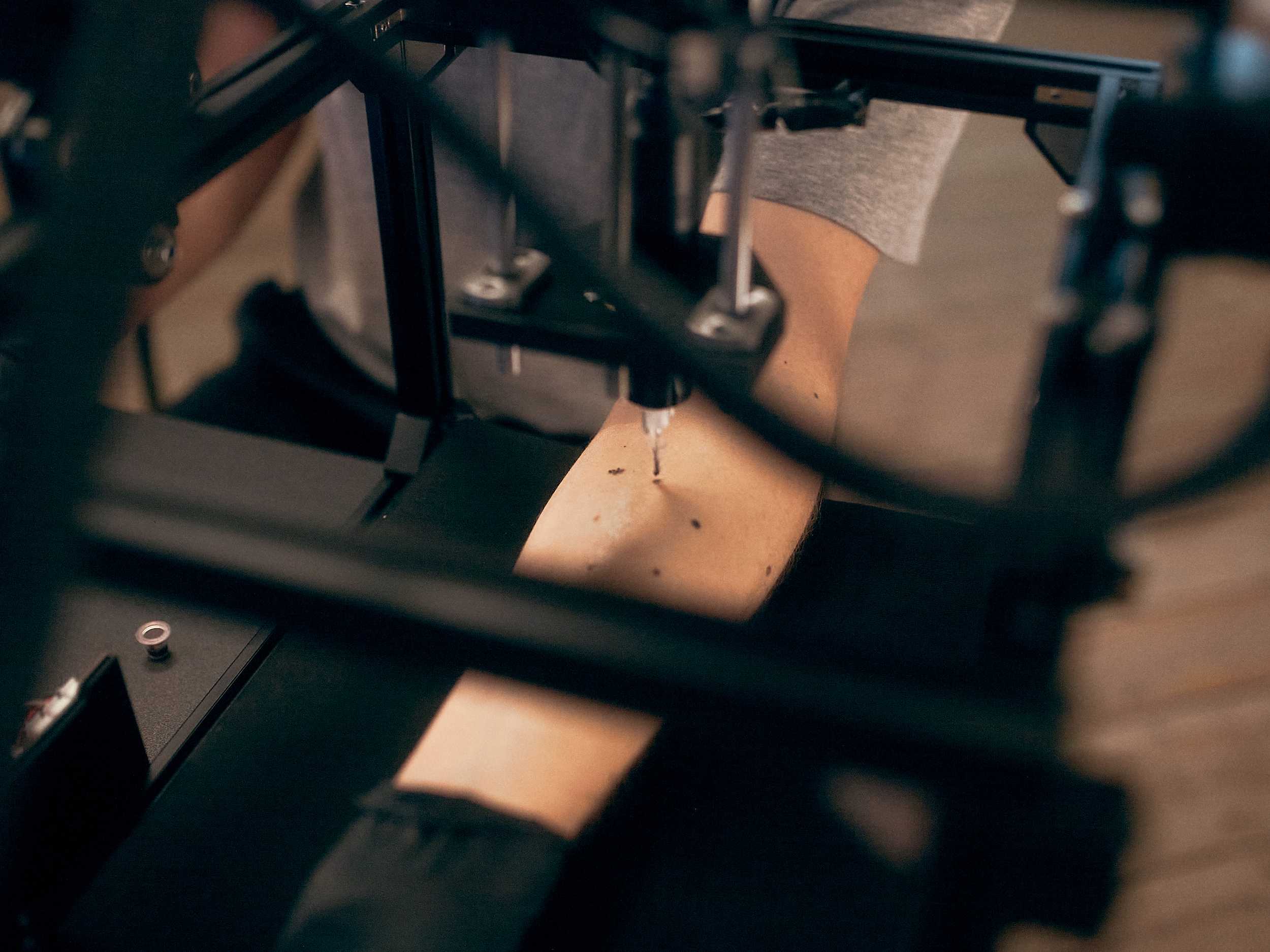

















"The human is permanently suspended between being the cause and the effect, between designing living systems and being designed by them. What is human in the end is neither the designer nor the artifacts but their interdependency"
Colomina & Wigley
"wo das Ich sich entscheidet" is a performance, in which I examine the relationship between the human and the artifacts it creates. Activating the performance, I rest my arm within a self-built apparatus. Human and machine are thus positioned in an intertwining setup. At its core, the structure holds a tattoo machine. Capable of moving the tattoo machine in a three-dimensional space, the apparatus moves the needle along a randomized predetermined path.
The distance, the undefined space between the needle and my skin, extending and contracting, becomes the field of mutual exchange, with the needle piercing through the threshold of my skin being the most radical moment in this negotiation of contact. Vulnerability, the opening of the porous epidermis to the needle, the apparatus, the touch as vice versa reveals what could be described as the act, in which the world opens. This moment is irreversibly inscribed into my skin – it is stored.
Build upon 20x20 b-type nut 6 aluminum profiles, the apparatus consists of 3-axes. Three endstops ensure the homing of all 3 axes. Two Nema 17 stepper motors are responsible for the x-directional movement. Another one is in charge of moving the y-axis. V-type wheels allow both axes to move. The z-axis is guided on a trapezoid thread supported by two linear shafts. A rotary tattoo machine is attached to it and carries a 1007RL cartridge needle.
The control unit is a custom manufactured PCB for operating the apparatus.
An Arduino Nano microcontroller acts as the centerpiece of the PCB. The installed Grbl firmware allows it to interface with any g-code script and is thereby responsible for translating g-code into physical movement.
Four TMC2208 silent stepper drivers operate all 3-axes. Three built-in LTV-817 optocouplers ensure noise-free axis limiting.
Two toggle switches are responsible for an emergency stop. When turned off, they keep any voltage from flowing into the PCB. Four push buttons in the lower left corner can reset the MCU and hold, resume or abort any operation. An 3.5mm audio jack provides voltage for the tattoo machine. Two barrel jacks serve as connectors for both a 12V and 5V power supply.
Read the complete thesis here
Special thanks to:
Julia Preiß Photos
Lennard Schmitt Camera
Nevena Savić Editing